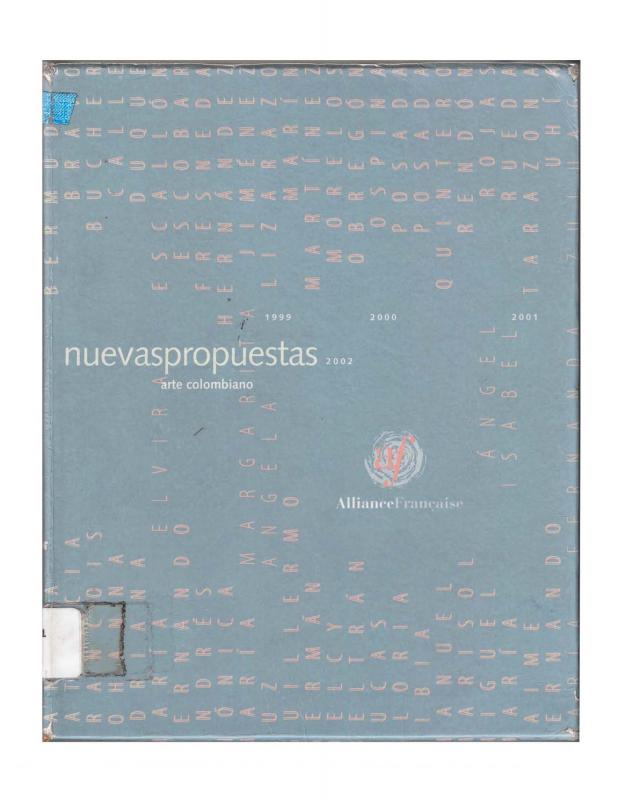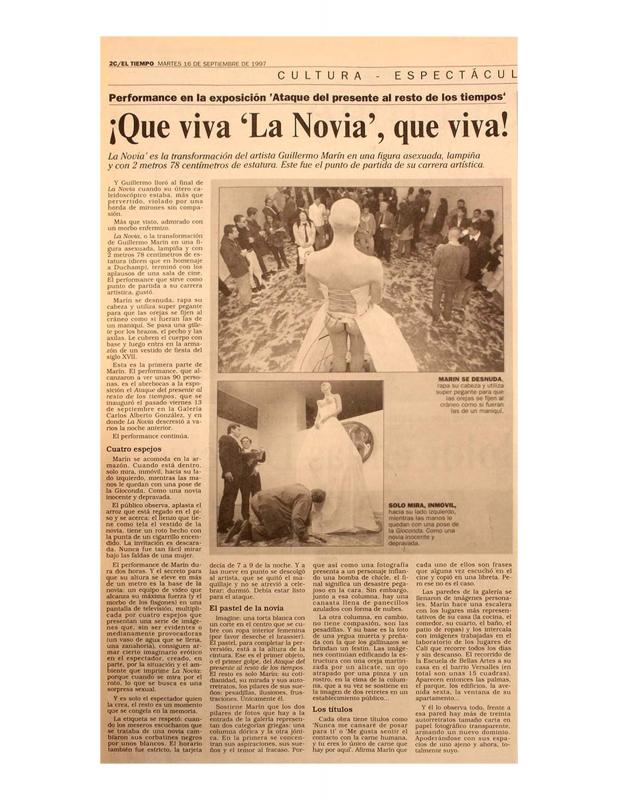This text compiles writings on the award-winning works at the 9th Salones Regionales (2001) organized by the Visual Arts Department of the Colombian Ministerio de Cultura. The individual texts discuss formal and theoretical aspects of the works as well as the reasons the jurors decided to grant them awards. The jurors are Gustavo Zalamea (b. 1951) for the northern region and Antioquia; José Horacio Martínez (b. 1961) for the coffee-producing region; Jaime Cerón (b. 1967) for Bogotá and surroundings; Gladier Charry for the Orinoquía region; and Carlos Jiménez (b. 1947) for the southwestern region. The texts by Cerón and Jiménez describe the works by Johanna Calle, Humberto Junca, and Guillermo Marín in order to then develop readings that center on the social, political, and artistic implications of those pieces. Since 1976, the Salones Regionales have formed part of the Colombian governmental policy to decentralize the visual culture of the country. They are considered an opportunity to view the art of Colombia and its regions as well as [serving as the] raw material for the broader curatorial project of the Programa Salón Nacional de Artistas run by the Visual Arts Department of the Ministerio de Cultura. As of the present (2009), thirteen of the events have been held.
Critic Carlos Jiménez (b. 1947) discusses how Marín embraces and develops performance in his work, El canto del deseo exaltado que va a encontrar su calma (2001). The artist bases that work on the Greek myth of Leda and the swan, where Zeus turns into an animal in order to possess the woman who had rejected him when he approached her in the form of a god. This myth refers to human nature as it wavers between animal desire and reason. In his performance, Marín is nude and perfectly still, wearing a mask that looks like the female sex organ. He is lying on a mound of grass beside a stuffed swan that seems about to take advantage of Marín’s nudity. The art historical reference combined with the voyeur’s gaze and the curiosity of the artist’s transsexual mask, create an awareness of witnessing a spectacle, creating the myth of the moment while at the same time altering it and taking it beyond mere allegory. The work gives rise to multiple readings (pictorial, sculptural, performatic, and referential). This process entails a reflection on the fetishistic nature of art history, sexual identity, and human perversion.
Carlos Jiménez studied architecture at the Universidad del Valle. He has a doctorate in theory, and the history of art and architecture from the Universidad Nacional of Colombia. He has contributed to Spanish weeklies, such as Cambio l6, Tiempo, El Europeo, and he currently writes for ArtNexus, Third Text, and Lápiz. He has a weekly column in the Cali newspaper, El País.
For information on other works by Guillermo Marín, see doc. no. 1130006, doc. no. 1129734, and doc. no. 1100756.



